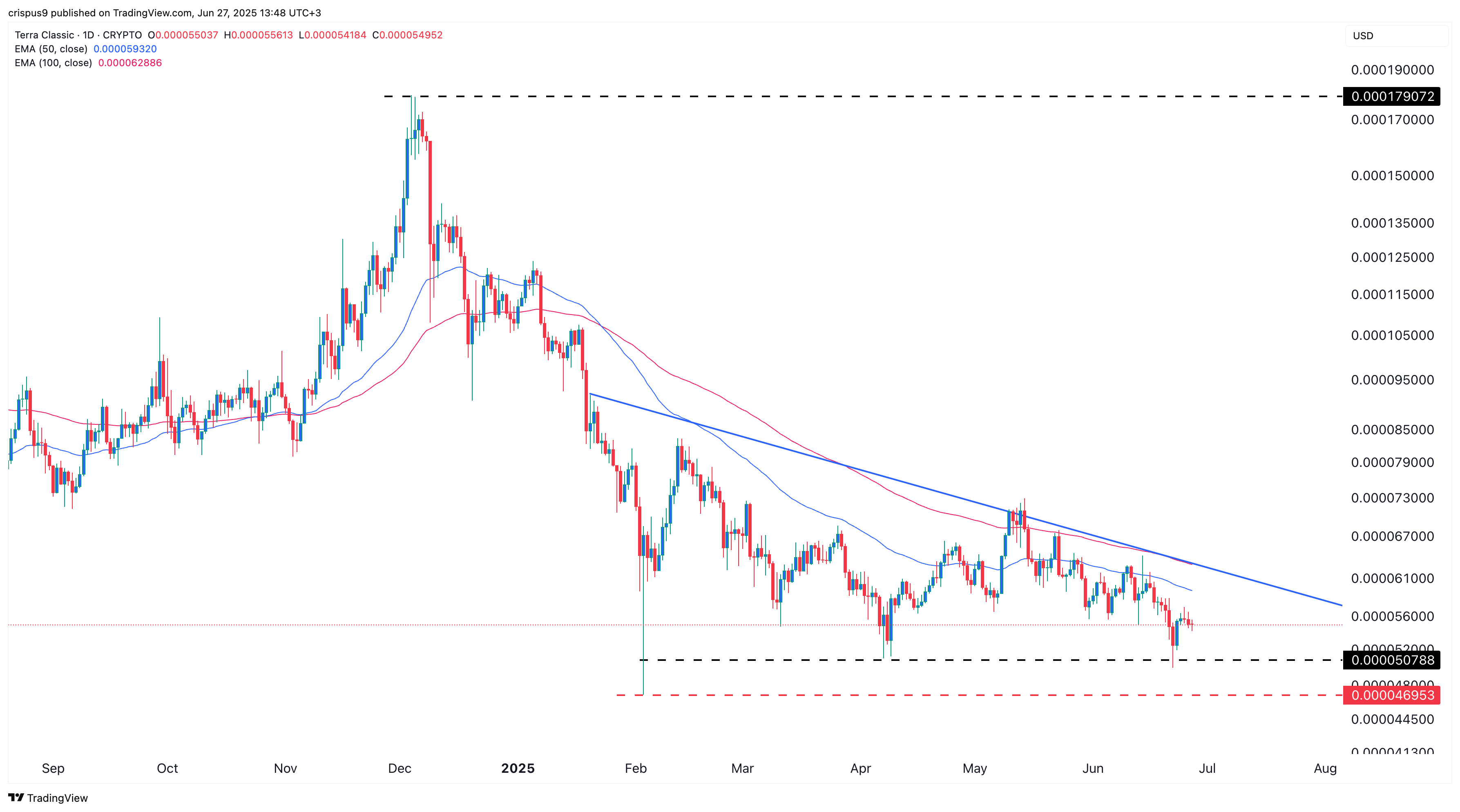LUNC price forms a risky pattern as weekly burn hits 365m
Terra Luna Classic price is at risk of further downside as its exchange volume slumped and a risky pattern formed.
Terra Luna Classic (LUNC) was trading at $0.000055, just above this week’s low of $0.000050.
CoinGecko data shows that daily volume has dropped to just $9.4 million, signaling waning demand as overall crypto sentiment deteriorates.
The same trend is visible in the futures market, where open interest has declined to $8.46 million from last month’s high of over $15 million. Falling volume and open interest can be risky indicators and often point to further downside.
Additional data shows that LUNC’s weighted funding rate turned negative for the first time since June 24. A falling and negative funding rate signals that investors expect its future price to be lower than current levels.
There are also signs that some investors are moving their LUNC holdings to exchanges—the first step before selling. Exchange inflows rose to $233,000 on Thursday.
LUNC remains one of the most deflationary tokens in the crypto industry. Weekly burns have jumped to over 365 million tokens, bringing the total LUNC token burn to over 411 billion. Token burns reduce circulating supply and can create positive sentiment around a cryptocurrency.
LUNC price technical analysis

The daily chart shows that LUNC has crashed this year, falling from a high of $0.0001790 in November to $0.000050. It has dropped below both the 50-day and 100-day Exponential Moving Averages, a sign that bears are gaining momentum.
Terra Luna Classic has also formed a descending triangle pattern, a commonly bearish continuation signal. This pattern includes a horizontal base, currently around $0.00005078, and a descending trendline connecting lower swing highs since January 19.
Therefore, the token is at risk of a strong bearish breakout, with the initial target at $0.00005078. A drop below that level could open the door to further downside, potentially retesting the year-to-date low of $0.00004695.
You May Also Like

lessons from Malta’s Papaya case

Why did ZK crypto’s price climb by 162% within 48 hours?

